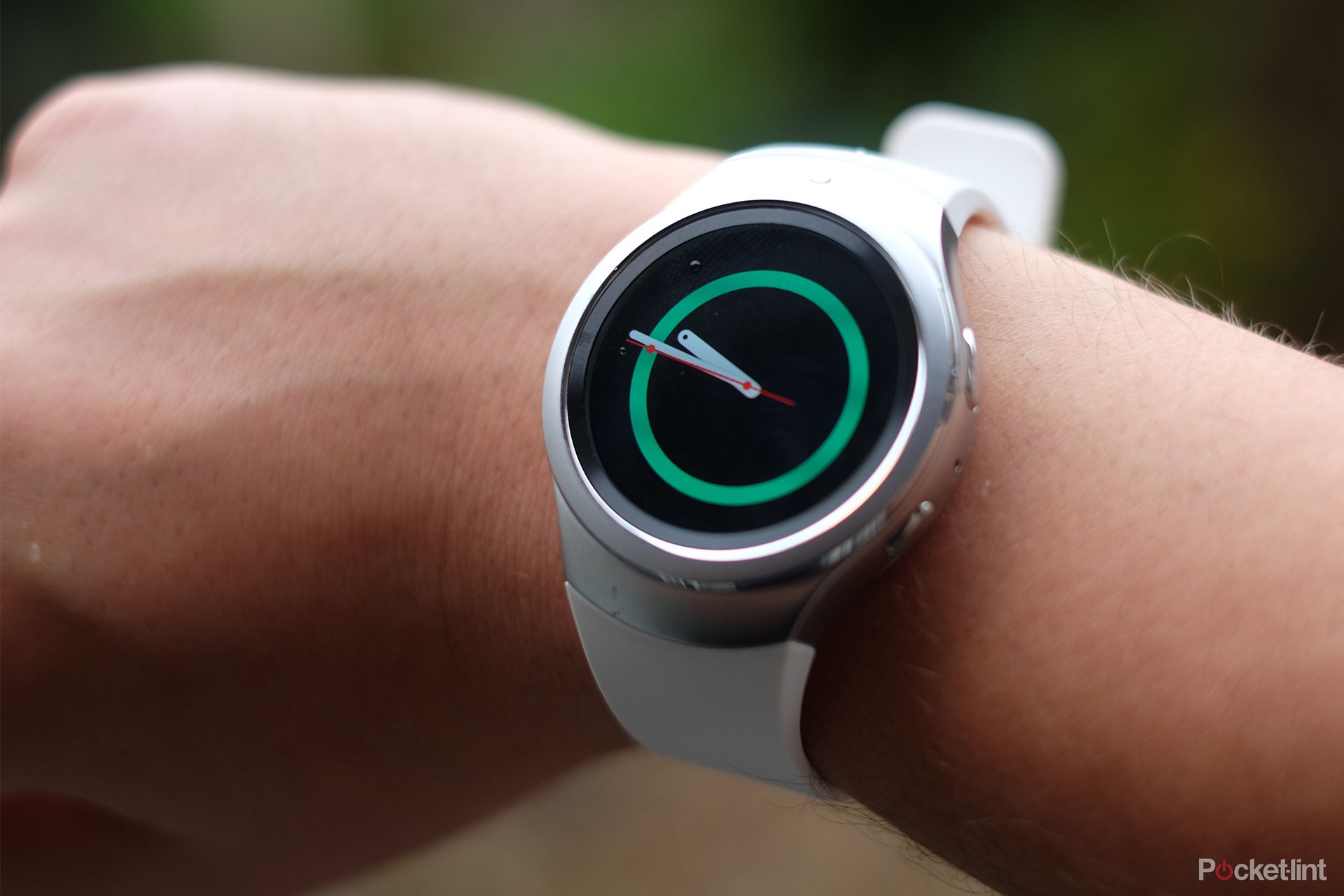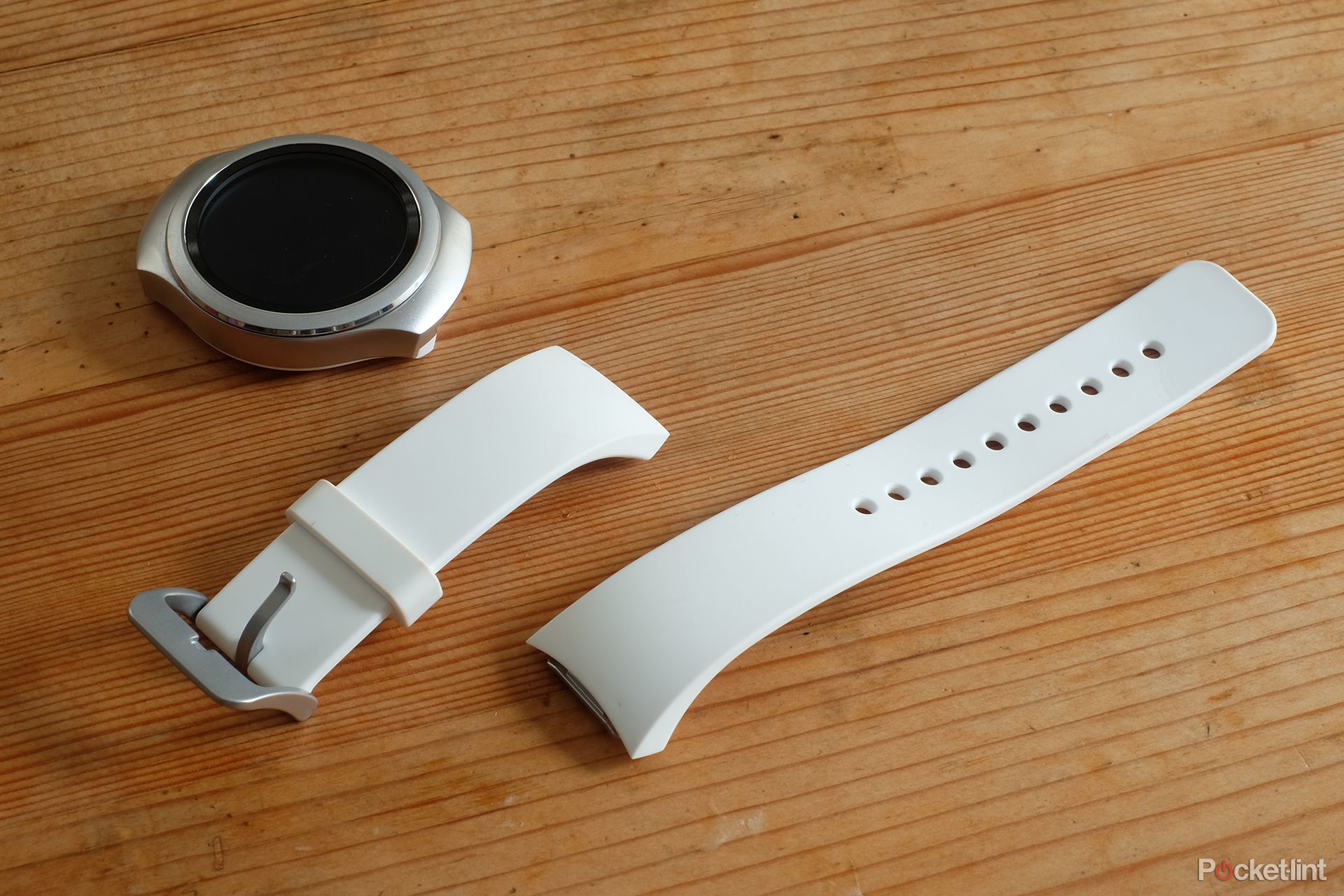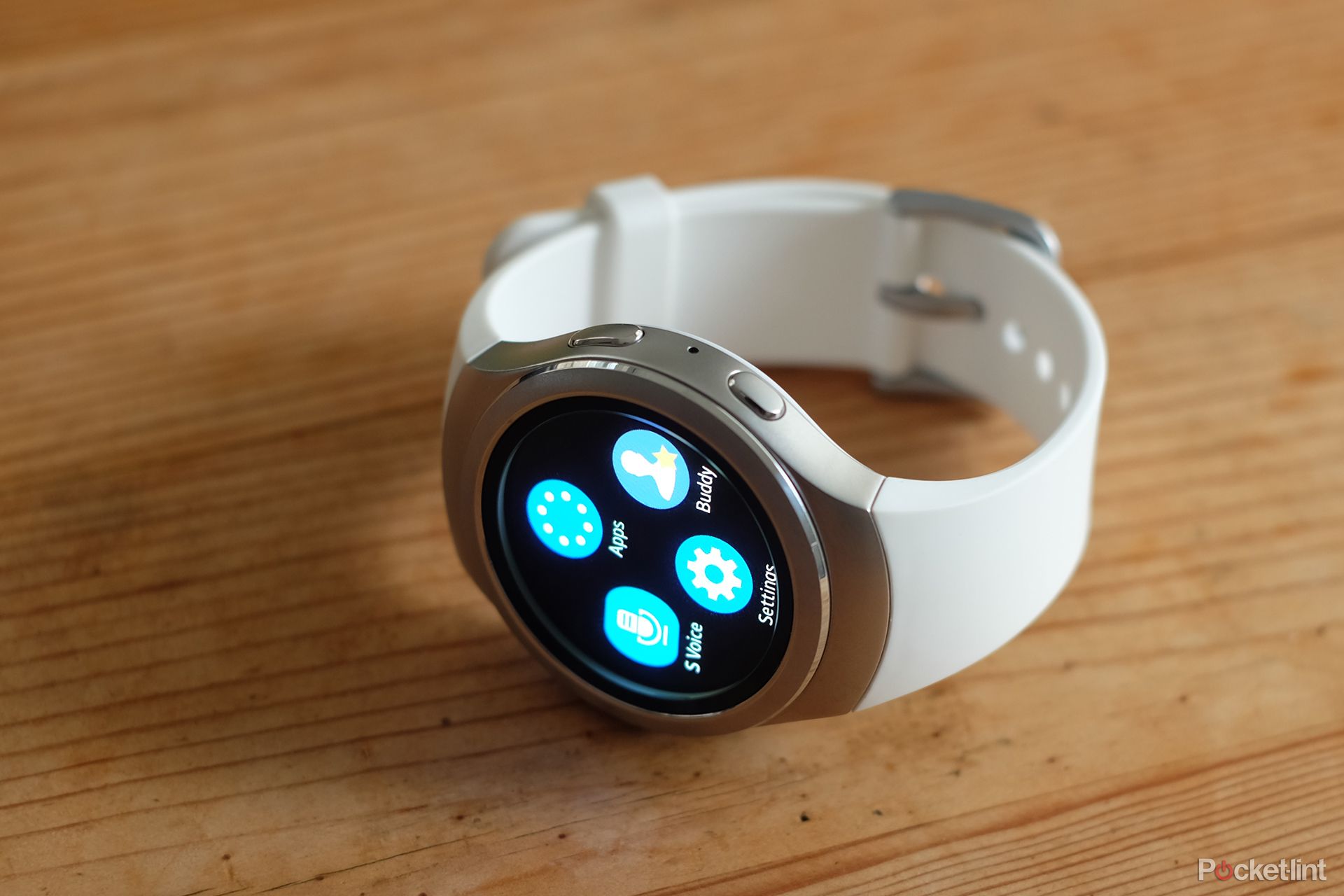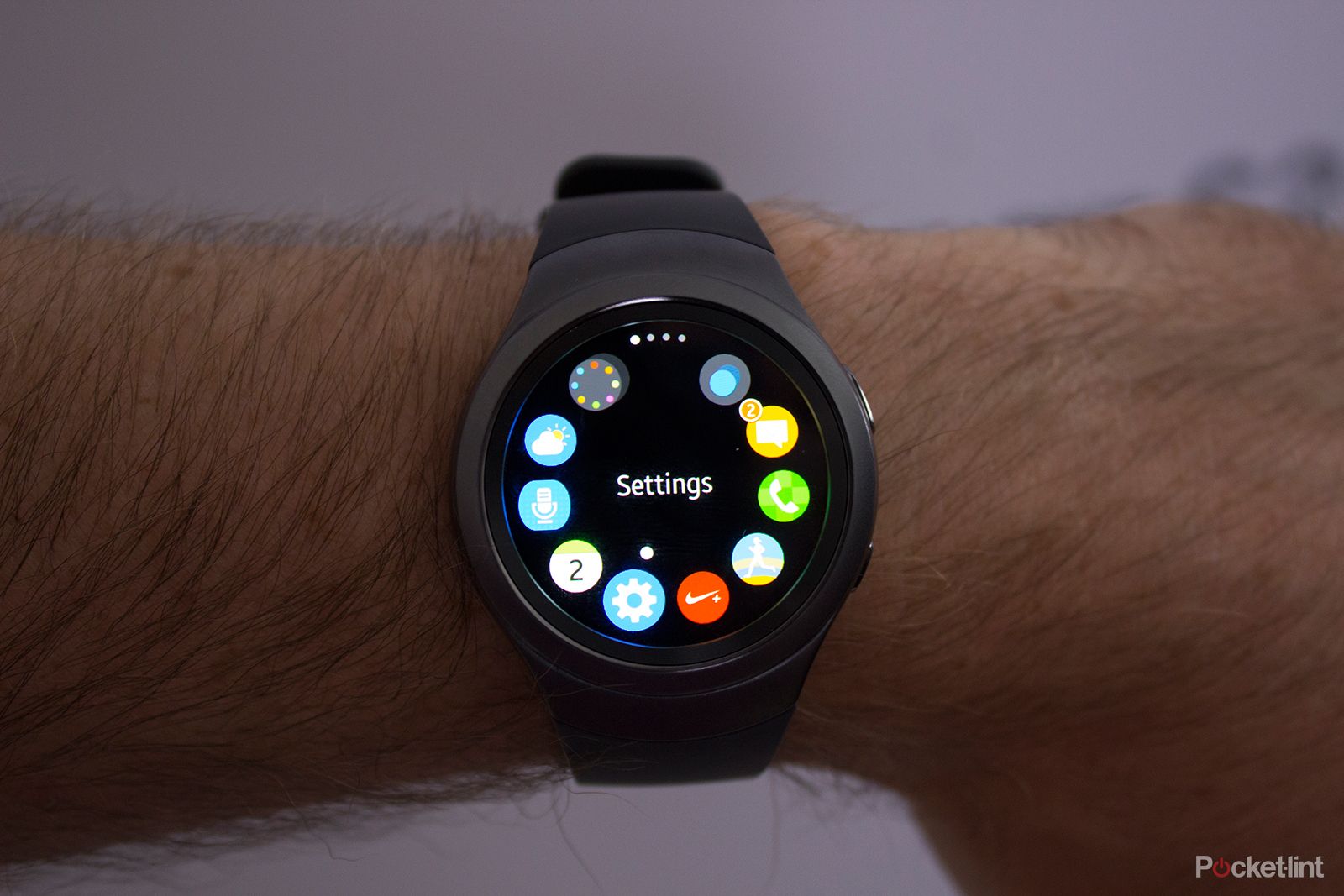You may know Samsung as the lead manufacturer for Android, with its smartphone sales decimating those of the official Nexus series. However, it also has a habit of going off on a tangent, in the occasional bid for world domination. The Samsung Gear S2 is a showcase for Tizen OS, an alternative to Apple Watch OS and Android Wear.
Our quick take
The Samsung Gear S2 makes a pretty good first impression. It looks much less embarrassing than the Gear S and the rotary dial on the front feels good and is properly integrated into the software.
With at least two days of light use, it's also on-par with the longest-lasting Android Wear watches. So what's the problem?
Thanks to a dead-on-arrival app ecosystem it makes even Pebble OS look terribly well-stocked and feature-packed. And with a £300 entry price we have no faith that the Gear S2 is suddenly going to turn things around for Tizen OS. For now, the S2 is a gamble.
Read: Samsung Gear S3 Classic review: Android Wear, beware, this is the smartwatch to beat

Samsung Gear S2 - 3.5 / 5
| FOR | AGAINST |
|---|---|
|
|
It's a bold move. It's what Samsung really wants to rule the smartwatch kingdom. But will it end up on the tech scrap heap like the company's Bada? Don't recall that phone OS? That tells you how successful Samsung's last attempt at rivalling the big software contenders was.
The Samsung Gear S2 is more successful because it's sparring with a bunch of still-flawed systems - as much as we love elements of the Huawei Watch's design, it's chunky and Android Wear still isn't quite there. Plus the S2 offers a very interesting alternative to the touchscreen-led operation most other smartwatches use.
At £300, though, the ways this Samsung lags a bit behind the more established names are very hard to accept. Put simply, it doesn't have enough apps. So is the Gear S2 dead on arrival or one that will develop over time?
Samsung Gear S2 review: Design
Let's start with the good stuff, though. The Samsung Gear S2 is all about the bezel. This little ring of metal around the watch face turns. And unlike those £30 diving watches you might have owned as a kid, it actually does something.
This is your main control wheel, used to cartwheel around menus and to flick between the Tizen OS's watch face widgets. The real triumph of the thing is that it feels great. Its light click feedback feels high-quality and if you buy one of these you'll almost certainly find yourself idly turning it. Like, all the time. Even when not doing anything, it's a worthwhile feature.
After the frankly weird-looking Gear S, the Gear S2 also appears reassuringly watch-like. Just like the new Moto 360 and LG Urbane. If you want a truly legit watch style, though, you need the Classic version of the Gear S2, which uses a standard 22mm watch strap fixture.
The one we're using, the "normal" edition, has a much stiffer proprietary (but removable) setup with an inbuilt silicone strap. It's less comfy than the Moto 360 or Apple Watch, but not to the extent you'll be put off wearing it.
However, there's definitely some of that residual geeky goo here the Gear S was positively coated in. The Gear S2 is a decent-looking watch; it's well-made, using 316L stainless steel but still looks a bit "gadgety". Of course, if you're not happy with that, why are you buying a smartwatch? That you're part of the early adopter elite will be clear as soon as people clap eyes on the display.
Samsung Gear S2 review: Screen
The Samsung Gear S2 has a 1.2in 360 x 360 pixel Super AMOLED screen. That's a bit smaller than much of the competition, but because you have to interact with the actual display a bit less, it's a total non-issue. It's not like we're at the stage of watching Netflix on our wrists yet. Thankfully.
Display sharpness is right up there with the best smartwatches, but as ever get your eyes right up close to the screen and you can see a tiny bit of pixel fizz. Black level, contrast and colour all lend the screen a punchy, poppy look, though.
There's apparently an ambient light sensor behind the screen, and the Gear S2 is pretty good at dealing with bright conditions too, as long as the display isn't in low-power mode. Fresh out of the box, the watch's screen just turns off completely when not in use.
There's no hugely sensitive gesture mechanism that wakes it when you move the watch to face you either. Most of the time a prod of the bezel is still needed. One bit we do like, though, is being able to cover the display with your palm to switch it off instantly: it's cinema-ready.
However, as with most of the Android Wear competition, there's an always-on mode too. This dims down the display to show an ultra-simplified watch face when it's just resting, letting you see the time whenever you like. As long as you're not out in super-bright conditions, that is. OLED's outdoors visibility is good, but not that good.
This makes the Samsung Gear S2 all-round less frustrating to use. So why doesn't Samsung apply the always-on mode as standard? It's because without doing so it couldn't make the claim of up to three days battery life between charges. With the always-on screen activated you're looking at two days max in our experience, which is similar to the LG Urbane.
Still, it's far better than the Apple Watch and Moto 360. You recharge the Gear S2's 250mAh battery using a little wireless charge dock, and it takes an hour or so. It's similar to the Moto 360 stand, to the extent the Moto one can be used to charge the S2 if you're very careful about how it sits. Both use the Qi standard.
Samsung Gear S2 review: Interface
Once you get over the gadgety appeal of the rotating bezel, the Gear S2 starts to seem more familiar in other ways too. It does use a touchscreen, for example, as the bezel doesn't act as a button. There are two extra buttons on the side too, acting as back and home buttons. It offers a new take on how to interact with a smartwatch, but doesn't throw away the basics.
Despite being used in last year's square Gear S, Tizen OS seems pretty well geared-up to make use of bezel control. All the menus are circular and their transitions feel like they're moving in-line with what your fingers are doing. This sort of visual intuitiveness is something Android Wear lacks at the moment.
For a system that has only had two watches released for it, the Samsung Gear S2's Tizen OS also comes with quite a lot of features baked-in. You can tailor which apps' notifications make it through to the watch (which it vibrates you with), and use the S Voice assistant to relay message and basic commands through the pinhole mic on the side.
To activate S Voice you setup a phrase you can say to wake the digital butler up whenever you're actively using the watch. It's a bit slow and doesn't feel as accurate as the voice commands of iOS or Android, though, not to mention being just as awkward to use in public.
The same S Health suite you get in Samsung's phones lives in the Gear S2, designed to monitor your general activity throughout the day. It then spits out a circular graph that shows exactly how active you've been. This is activity tracking for office workers, basically.
The heart-rate scanner on the back should be seen from this perspective too: tt often struggles to record the rate at all while you're moving, making it pretty useless for runners - unless you just want to fire the thing up as soon as you finish. Much like the Moto 360 then.
There is a more serious fitness app on the Samsung Gear S2 too: Nike+ Running. This is one of the lead Android running apps, and is a full-fat GPS running suite. On the Gear S2, though, it only works as a second screen for your phone. While there is a 3G version of the S2 with GPS, the version we're using doesn't have it. It has Wi-Fi and Bluetooth, but no internet-free location tracking. It can't really do that much on its own.
Serious athletic types would be better off with the Garmin Fenix 3, or even the much cheaper Garmin Vivoactive.
Samsung Gear S2 review: Apps
It's only so serious an issue because of Tizen OS's extremely limited app support. Prefer Runkeeper, Strava or Runtastic to Nike+? You're out of luck. On there lighter side, there are quite a lot of watch faces to try, plenty of which have neat little extra bits of info on them like number of steps you've taken that day.
However, in terms of proper apps, the Gear S2's outlook is desert-like. Even though we're using roughly the same core software as we saw last year in the Gear S, the list of available apps is pitiful.
And some of the initial Gear S favourites like CNN come preinstalled anyway. It's a clear indication that this watch's predecessor was dropped almost instantly by devs, and perhaps Samsung too shortly after release. Most likely because sales were very poor.
The key question: is the Gear S2 really going to do much better when it costs £300, actually has fewer features than the Gear S and the competition has developed a lot in the interim? It's a gamble you have to accept if you want a Gear S2.
To recap
The Samsung Gear S2 makes a pretty good first impression. But thanks to a DOA app ecosystem it makes even Pebble OS look terribly well-stocked and feature-packed. And with a £300 entry price we have no faith that the Gear S2 is suddenly going to turn things around for Tizen OS. For now, the S2 is a gamble.




